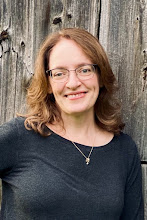Writers learn early on publishers, editors, agents, and readers have expectations. Not only do we examine submission guidelines carefully; we know we must follow them if we want our writing to be considered. Along with that, there are industry standards.
In this blog post, I thought I'd briefly address the common types of children's books and what to expect from them. I almost created a chart. Then I realized that so much of this needs an explanation.
And of course, these are just guides. In the dozens of conferences and workshops I've attended over the years, different authors, editors, and agents say different things--though similar.
So, these are not hard and fast rules, but guidelines for getting published in 2022 and beyond. Since my writing focus is nonfiction, I had to include a bit for each type of kidlit book regarding nonfiction, too.
Picture Books
Audience: Varies. Some books are for ages 3-8. Others are for 7-10. What surprises some is that picture books can also be for ages 9-13+. Think of those as middle grade picture books.
Word Count: For young children, fiction picture books published today are typically under 500 words. (Sorry Bill Peet fans.) Nonfiction picture books can be 2,000 words or more. (Check out Laurie Wallmark's books.) Back matter is not part of the word count.
Design: Picture books differ from short stories because the pictures are necessary to tell the story. Picture books are most often 32 pages in length. They can be shorter or longer, but are always published in sets of 8 pages.
Know: Picture books are designed to be read aloud. Only write in rhyme if your rhythm and rhyme is perfect. Learn more about picture book word count here.
Nonfiction note: Structure matters. Study it. Learn more. Take workshops on structure! This blog post covers PB biography structures, but there are so many more. I highly recommend Melissa Stewart and Marlene Correia's book 5 Kinds of Nonfiction: Enriching Reading and Writing Instruction with Children's Books for all of my kidlit nonfiction writer friends. It has a whole chapter devoted to text structures. (Note: The link for 5KNF is directly to the publisher where you can save $10 and get free shipping. HIGHLY recommend this book!)
Early Readers/Leveled Readers
Audience: New readers, ages 4-7
Word Count: 50-2,000 words
Design: The trim size is always 6x9 inches.
Know: Leveled readers are written as part of a series with different reading levels. Since they are designed for newly independent readers, the vocabulary is easy and sentence structure simple (though different with levels).
Nonfiction note: Lots of these leveled readers are nonfiction, but writers should also know that the books are often developed in-house. BUT you can still write them.
Chapter Books
Audience: Independent readers, ages 7-10
Word Count: 5,000-13,000 words
Design: Highly illustrated, small trim size
Know: Chapter books have simple plots with developed characters/ideas that relate to the young reader. Several books in the series are often released at one time.
Nonfiction note: These are often developed in-house, too, but they don't have to be.
Middle Grade
Audience: ages 8-12
Word Count: 20,000-60,000 words (Word counts vary based on the genre within the middle grade audience. Fantasy tends to be longer.)
Design: Illustrations are few, sometimes only at the beginning of a chapter of a fiction MG book.
Know: Fiction and nonfiction middle grade can address complex topics and use more advanced vocabulary.
Nonfiction note: Nonfiction MG include a lot of photographs, sidebars, and nonfiction text features. They can even be graphic. They do need to stand out. Be sure to explore the 5 kinds of nonfiction developed by Melissa Stewart (book linked above or explore her blog). Submit with a proposal and sample.
Young Adult
Audience: ages 13+
Word Count: 30,000-75,000 words (Word counts vary based on the genre within the YA audience. Fantasy tends to be longer.)
Design: YA books look like a book for adults, but the content (fiction or nonfiction) is for teens.
Know: Complex plots showcase an inward focus as a character asks the question, "Who am I?"
Nonfiction note: Nonfiction YA uses fewer/no sidebars and often includes photographs in groupings instead of spread throughout the book. Submit with a proposal and sample.
Word counts truly vary. My middle grade nonfiction book The Laura Ingalls Wilder Companion: A Chapter-by-Chapter Guide was 46,000 words. However my upcoming Quirky Critter Devotional: 52 Wild Wonders for Kids had just 21,000 words. No matter the book, you only have the first few lines or paragraphs to captivate the young reader. (Adults tend to be more forgiving and wait to finish a chapter or two before deciding a book is not for them.) So, make every word count.
Learn Even More
If you are a kidlit writer, immerse yourself in the kidlit world. Writing success comes with a devotion of time to your art!
If you're curious about writing nonfiction for kids and teens, I'm teaching a full-day master class in September. We'll cover nonfiction, research (especially when you're not an expert), and writing for the educational market. In addition to my three workshops, you'll get hands-on activities relevant to the day, AND hear from two editors. Loads of handouts/resources for attendees, too! We'd love for you to join us at Write 2 Ignite.
If you are reading this after the master class is over, be sure to check out my schedule or let your favorite writing groups/conferences know I love to teach (in person and online). 

















No comments